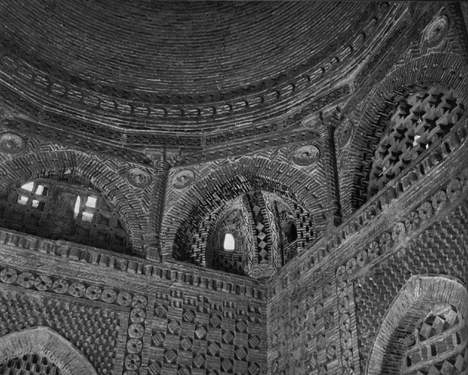|
This dynasty was one of the first that rose to power in Khorasan after the conquest of Arabs. Its
founder was called Saman-Khuda who was a native Tajik of the city of Balkh. Although, the
dynasty lasted for a short period (AD 819-999) but it left a great mark in the national sentiments
of Khorasanians and their cultural life.
During the course of time the four grand sons of Saman Khuda obtained other cities of Khorasan
from the Abbasid caliph Al-Mamun through their diplomatic efforts. It is worth mentioning that
they had kept very good relation with Abbasids throughout their struggle for freedom of their
land. Nuh became governor of Samarqand, Yahya of Shash, Illyas of Herat and Ahmad of
Farghana. In 875 AD, Nasr son of Ahmad became the governor of Farghana and succeeded by
his brother Ismail I. Ismail Samanid was a great man with great ambitions. He overthrew the
Safarids in parts of Khorasan and the Zydites of Tabaristan and established a closely centralized
government in Khorasan with Bukhara as its capital. It is important to mention that the word
Transoxania or Mahwarahu naher simply means 'beyond the river' and refers to the area of
Khorasan that was beyond the river of Oxus or Amu. This northern part of Khorasan has
traditionally been referred to as Mahwarahuu naher which was also known as Sogdiana.
During the Dynasty of Samanid Khorasan prospered with a considerable expansion in trade,
industry and cultural life. The cities of Samarqand and Bukhara became the cultural center of
Khorasan. Dari (or Farsi) literature flourished to new heights. Rodaki and Ferdowsi were the
poets of this time. Philosophy, history, theology and other branches of knowledge of the time
were encouraged that ultimately formed the foundation of the Islamic-Khorasanian culture.
Though not many of Samanid buildings survived but those that remained are testimonies to the
originality and greatness of their architecture. The Mausoleum of Ismail Samanid still stands in
Bukhara and is a good example of the architecture of their time. It is a perfectly symmetrical
building constructed entirely of brick. Bricks are extensively used to form decorative patterns
based on their location and direction. The Ismail Samanid mausoleum (refer to the attached
pictures below) is a centralized square space with sloping sides and four pillars that together
forms almost a perfect cube. It features a large dome surrounded by four smaller domes that
pointed like an arch.
One important contribution of Samanid to art is in pottery and the techniques they developed for
producing pottery. One of the techniques they developed is called slip painting. It is the process
of mixing semifluid clay with their colors to prevent the designs from running when heated with
fluid glazes in use then. The potters decorated their pottery with designs such as Arabic
calligraphy, birds, lions, bull's head. The art of bronze casting and other metal work were also
flourished.
From mid-10th century, Samanid power began to decline both economically and politically.
Economically because the northern trade routes were interrupted and politically because of the
rising power of Turkish people from north and southern part of Khorasan, Ghazna, where they
had already established themselves.
Nuh II the Samanid under continuing pressure of Turkish people and in the hope of retaining
some control confirmed a former Turkish slave, Sabuktagin, and appointed his son Mahmoud as
governor of southern part of Khorasan. But by that time the Qarakhanids had occupied large
parts of northern Khorasan (Transoxania) and allied themselves with Mahmoud and deposed
Mansur II taking Khorasan. Bukhara the capital of Samanid dynasty fell in 999 AD. Although
Ismail II continued the struggle against Mahmoud and Quarakhanids but was assassinated in the
year 1005.

Samanid Mausoleum In Bokhara

Samanid Mausoleum Interior
|